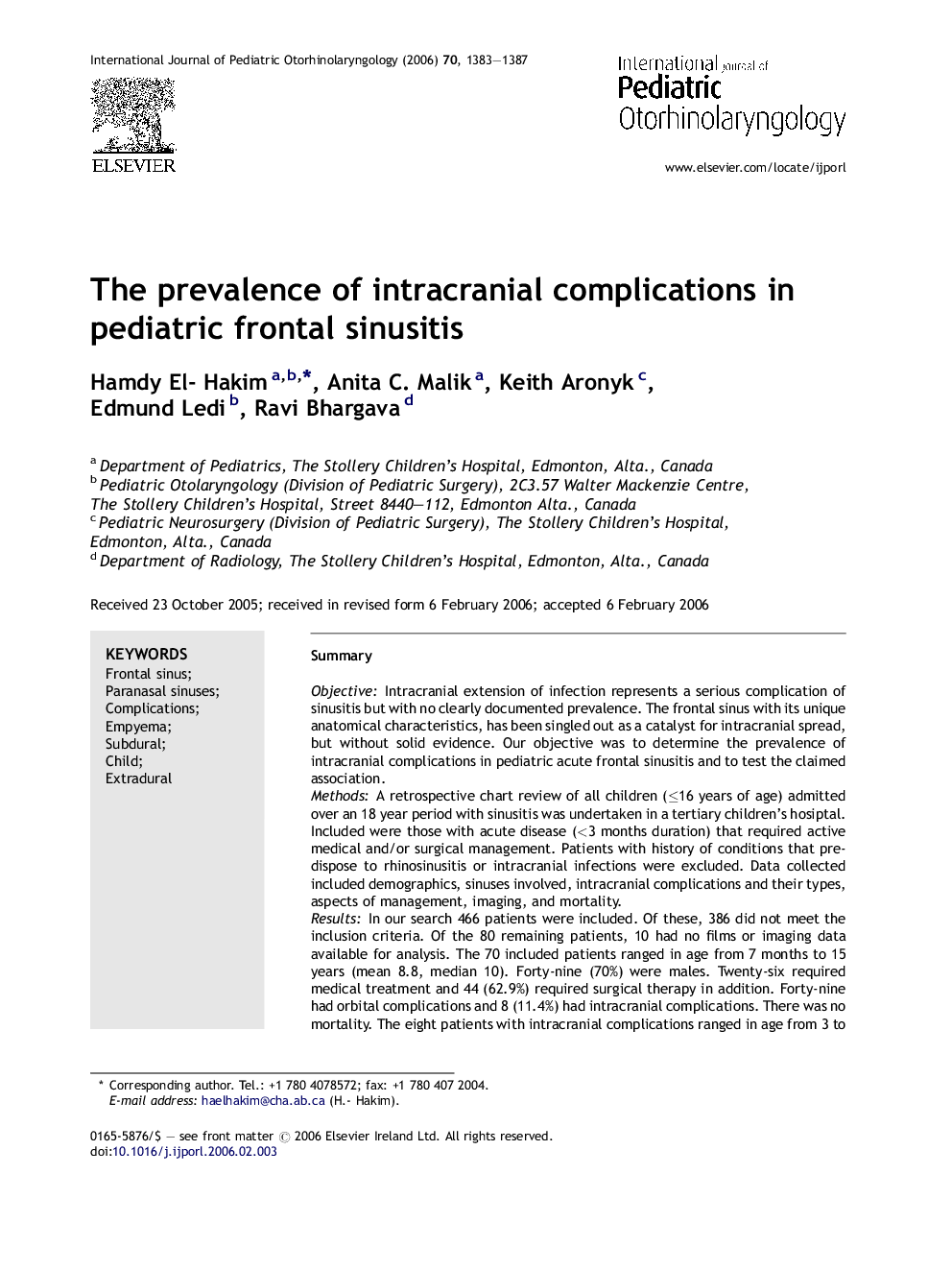| Article ID | Journal | Published Year | Pages | File Type |
|---|---|---|---|---|
| 4114957 | International Journal of Pediatric Otorhinolaryngology | 2006 | 5 Pages |
SummaryObjectiveIntracranial extension of infection represents a serious complication of sinusitis but with no clearly documented prevalence. The frontal sinus with its unique anatomical characteristics, has been singled out as a catalyst for intracranial spread, but without solid evidence. Our objective was to determine the prevalence of intracranial complications in pediatric acute frontal sinusitis and to test the claimed association.MethodsA retrospective chart review of all children (≤16 years of age) admitted over an 18 year period with sinusitis was undertaken in a tertiary children's hosiptal. Included were those with acute disease (<3 months duration) that required active medical and/or surgical management. Patients with history of conditions that predispose to rhinosinusitis or intracranial infections were excluded. Data collected included demographics, sinuses involved, intracranial complications and their types, aspects of management, imaging, and mortality.ResultsIn our search 466 patients were included. Of these, 386 did not meet the inclusion criteria. Of the 80 remaining patients, 10 had no films or imaging data available for analysis. The 70 included patients ranged in age from 7 months to 15 years (mean 8.8, median 10). Forty-nine (70%) were males. Twenty-six required medical treatment and 44 (62.9%) required surgical therapy in addition. Forty-nine had orbital complications and 8 (11.4%) had intracranial complications. There was no mortality. The eight patients with intracranial complications ranged in age from 3 to 14 years (mean 12). Six were males. Of the 23 patients with frontal sinus involvement, 7 (30.4%) had intracranial complications. The odds ratio for developing intracranial complications if the frontal sinus was involved in the inflammatory process was 20 (95% CI 2.30–176.4).ConclusionThere is a high probability of developing intracranial complications in children who present with acute frontal sinusitis to a tertiary care hospital. This should prompt all involved specialists to insist on detailed radiological evaluation in this group, to halt preventable mortality and morbidity.
